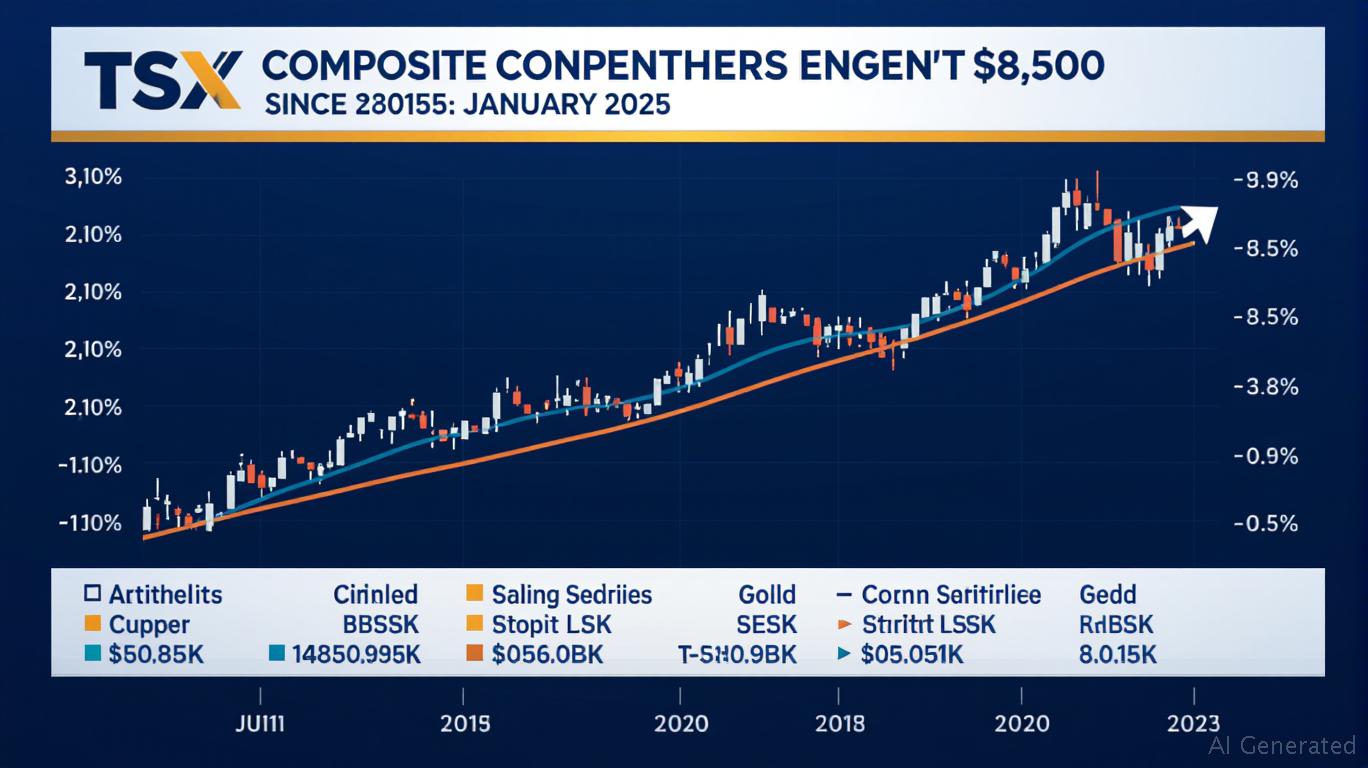TSX Resilience Amid U.S. Tariff Threats: Navigating Sector Divergence and Macro Risks
The Toronto Stock Exchange (TSX) has emerged as a paradoxical bastion of stability in 2025, even as U.S. tariffs loom over Canadian exports. While the U.S. has imposed a 10% baseline tariff on Canadian goods since March, strategic exemptions under the USMCA and sector-specific resilience have created divergent paths for mining and real estate equities. Investors navigating this landscape must weigh tariff-exempt opportunities in mining against the vulnerabilities of real estate to rising interest rates and geopolitical uncertainty. Here's how to capitalize on sector disparities while hedging risks.

Mining Sector: Tariff Exemptions Fuel a Commodity Rally
Canadian mining equities are thriving despite U.S. tariffs, thanks to precise USMCA carve-outs. The suspension of Canada's country-specific tariff rate until July 9 and exemptions for critical materials like copper, lumber, and energy products have shielded key exports from punitive duties. For instance, companies like First Quantum Minerals (TSX: FM) and Canfor Corporation (TSX: CFP) benefit from tariff-free treatment under USMCA rules of origin, allowing them to retain U.S. market share.
Investors should prioritize mining stocks with exposure to tariff-exempt commodities or those vertically integrated into U.S. supply chains. The ongoing suspension of stacked tariffs under Section 232 (e.g., aluminum, steel) further stabilizes margins, while the threat of retaliatory tariffs from Canada's digital services tax remains unresolved—a wildcard that could pressure equities if implemented.
Real Estate Equities: Resilience Amid Rate Uncertainty
Canadian real estate equities, particularly REITs and developers, face a different challenge: the Federal Reserve's tightening cycle. Unlike goods exports, services—including real estate—are unaffected by U.S. tariffs. However, rising interest rates since early 2025 have crimped borrowing costs for developers and reduced demand for speculative real estate.
Despite this, core real estate assets—such as logistics hubs or rental housing—remain resilient due to structural demand. For example, RioCan Real Estate Investment Trust (TSX:
.UN) has seen steady occupancy rates in urban centers, insulated from rate hikes by long-term leases. Investors should focus on defensive real estate plays while avoiding speculative developments reliant on low borrowing costs.Macroeconomic Risks: Inflation, Fed Policy, and Geopolitics
The TSX's resilience masks broader vulnerabilities. Inflation, though easing from 2024's peaks, remains elevated, disproportionately affecting real estate valuations. Meanwhile, mining stocks could face headwinds if the Fed's pause in rate hikes turns into cuts, which might weaken the U.S. dollar and depress commodity prices.
Geopolitical risks loom as well. The U.S. has threatened new tariffs on Canadian goods over digital services taxes, though none have been enacted yet. A potential July 9 tariff reset could reintroduce volatility, particularly for mining companies operating near tariff-exempt thresholds.
Actionable Insights for Investors
- Overweight Mining Equities: Target companies with exposure to tariff-exempt commodities (e.g., copper, timber) or those meeting USMCA rules of origin.
- Underweight Speculative Real Estate: Avoid developers reliant on low rates; favor REITs with inflation-linked leases or essential infrastructure.
- Hedge with Commodities: Use gold or energy ETFs (e.g., GDX or XEG) to offset inflation risks while maintaining exposure to mining.
- Monitor Policy Signals: Track U.S.-Canada trade talks and Fed commentary. A July 9 tariff decision or a shift in rate policy could trigger sector rotation.
Conclusion
The TSX's resilience hinges on its dual identity: a mining powerhouse shielded by USMCA exemptions and a real estate sector navigating Fed-driven headwinds. Investors who distinguish between these dynamics—prioritizing mining's tariff advantages while tempering real estate exposure to rate risk—can navigate this landscape profitably. As always, staying attuned to geopolitical and macroeconomic shifts will be critical to avoiding pitfalls in this volatile environment.
Stay informed, stay sector-aware, and invest with discipline.
Sign up for free to continue reading
By continuing, I agree to the
Market Data Terms of Service and Privacy Statement

Comments
No comments yet